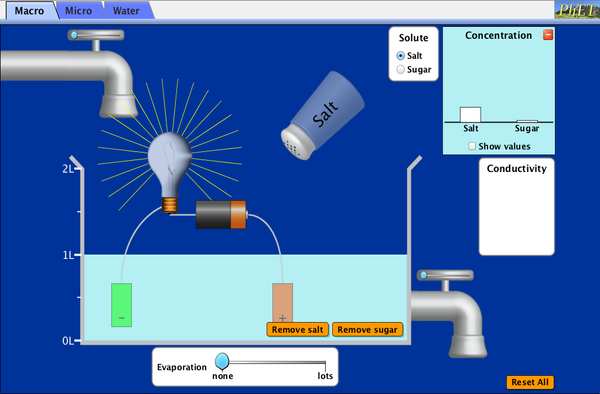new posts in all blogs
Viewing: Blog Posts Tagged with: Featured, Most Recent at Top [Help]
Results 1 - 25 of 1,214
How to use this Page
You are viewing the most recent posts tagged with the words: Featured in the JacketFlap blog reader. What is a tag? Think of a tag as a keyword or category label. Tags can both help you find posts on JacketFlap.com as well as provide an easy way for you to "remember" and classify posts for later recall. Try adding a tag yourself by clicking "Add a tag" below a post's header. Scroll down through the list of Recent Posts in the left column and click on a post title that sounds interesting. You can view all posts from a specific blog by clicking the Blog name in the right column, or you can click a 'More Posts from this Blog' link in any individual post.
Zoo animals like lions and tigers may be exciting, but we have a native animal that’s just as big and exciting: the bison. A study of bison can liven up a study on Native Americans, pioneers, the West, or the Great Plains. They’re also a fun animal study subject.
FreshPlans visited some bison at the National Wildlife Research Center in Ft. Collins, Colorado. Can you see the bison in the picture below? He doesn’t look very big, right? Up close, these are very big animals. They came up pretty close to get a good look at us, so we got a good look at them, too.
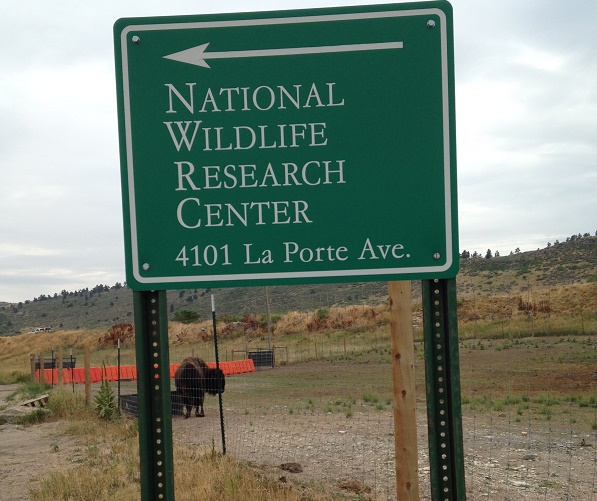
We saw bison standing around, eating grass, standing around, rolling in the dirt, and standing around. This is pretty much what we do, our guide explained. “They can run, and if they do, you want to get out of the way,” he told us. But they don’t go scampering around for fun.

These bison are part of a joint USDA and Colorado State University project to bring healthy bison back to Colorado. A disease called brucellosis has become a problem in the herds of buffalo in Yellowstone Park. The project is using new technology to breed healthy bison who are descendants of the Yellowstone Park herds, without the dangerous disease.
When we teach about animals, we like to focus on four things:
- Morphology: the physical characteristics of animals, including body parts and adaptations.
- Life cycles: how animals are born, live, and reproduce.
- Habitats: the places where animals live.
- Relationships with humans: how humans affect the animals and how they affect us.
Even though we got a good look at the bison, we couldn’t touch them. We were curious about their unusual shape. So we went to the Discovery Museum in Ft. Collins to look at the skeleton of a bison. We saw that the big humps on their backs had bones inside. It reminded us of a stegoasaurus.
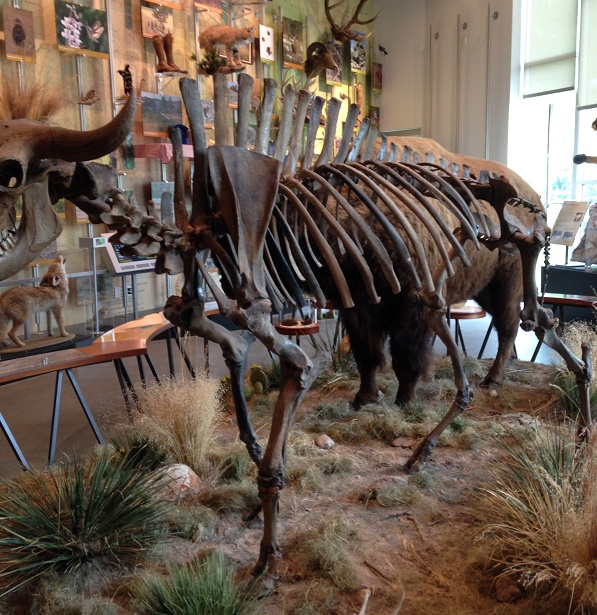
We got a good look at the skull of the bison, which seemed to be wearing a happy grin. Check out an interactive lesson on the bison’s digestive system to get an idea what’s inside a living bison.
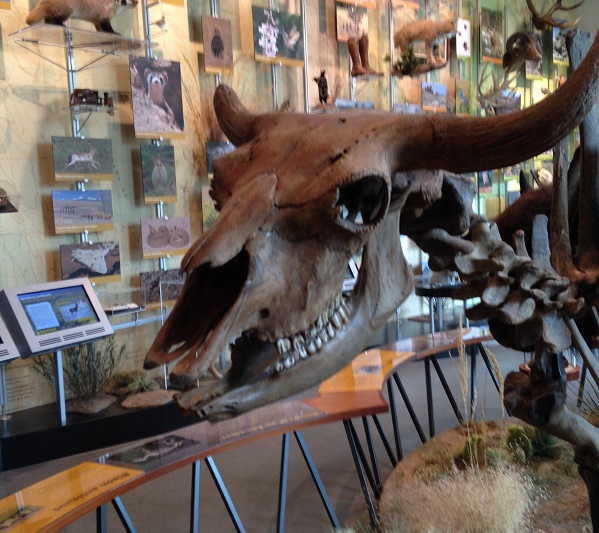
We learned that bison are mammals and ruminants, like cows. They have live babies, which grow up and have babies of their own, just as people do.
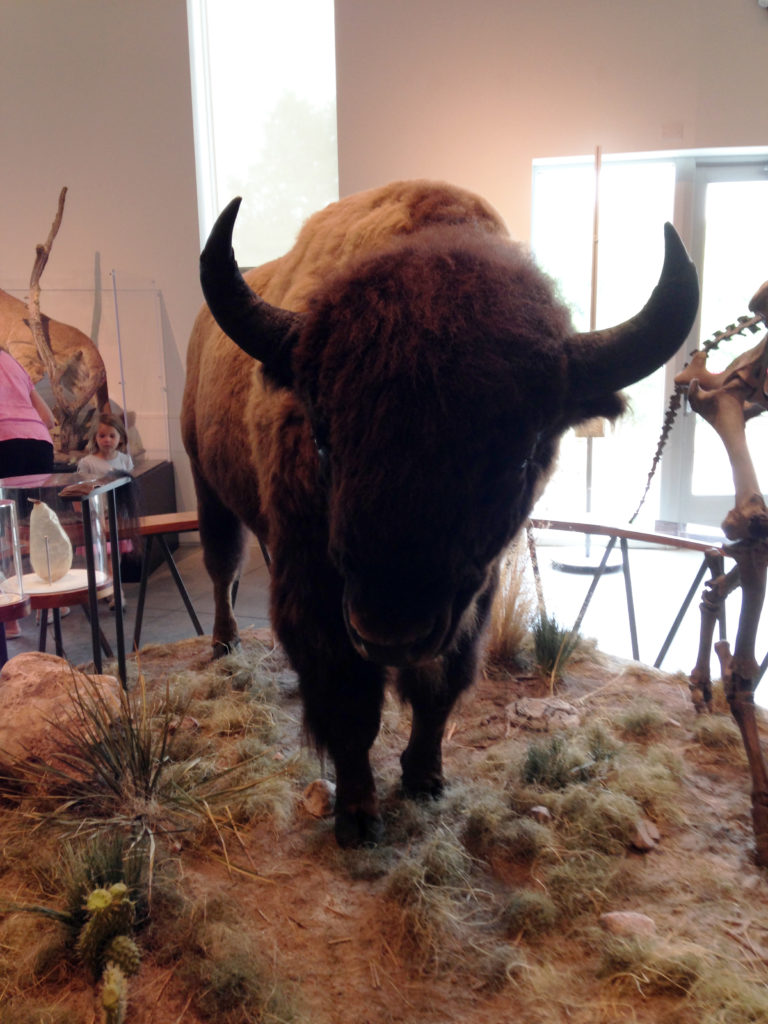
The museum has a taxidermy bison, which looked a lot like the live bison we saw — although it was a lot cleaner and neater. We got to feel bison fun, and we were surprised to find that it was very soft.
This bison is shown in a place made to look like its natural habitat: the prairie. The bison we visited at the USDA Wildlife Research Center live on the prairie, but they don’t get to roam like the buffalo in the song.
While some people eat bison meat today, we learned that most “buffalo meat” you can buy in a restaurant or a grocery comes from animals which have both bison and domestic cow heritage. We found bison wool yarn in Ft. Collins, but once again it included both bison wool and wool from sheep. Bison’s relationship with people today is less about human beings using bison for practical purposes and more about humans trying to care for the bison and make sure our grandchildren can still see this majestic animal on our prairies when they grow up.
Native Americans living on the plains and prairies, however, relied heavily on bison. Let younger students try out this interactive lesson on the relationship between Native Americans and bison. Older students will enjoy this more complex interactive web page from the Smithsonian.
Here are some more resources for teaching about bison:
- Check out the Smithsonian’s Interactive Bison Exhibit for a little mouse practice and reading. Set it up as a station at your classroom computer and let students whet their appetite for learning about bison with a lot of intriguing facts.
- Mr. Nussbaum has some fun activities about bison, both online and printable.
- Texas Parks and Wildlife have a lesson on what bison eat. This page includes a number of different activities bringing up a lot of interesting points, and introducing the word “forbs,” which was a new one for us. There’s an interesting activity asking students to analyze a photograph, which we think could be a good part of critical reading and media literacy lessons. Feel free to use the photos on this page for your analysis!
- The U.S. Mint has a lesson that helps students to recognize bison as natural resources. Both this lesson and the previous link include plant study.
- Woolaroc Museum has a bison lesson plan pdf with reproducibles including information about bison and Plains Indians, as well as a retelling of a traditional folk tale.
- The Smithsonian American Art Museum has a lesson using George Catlin’s paintings and writings to explore the idea of regions.
- The National Wildlife Federation has a science process lesson that gives students hands-on insight into why it’s so hard to get firm numbers for animal populations. They also have a great bison lesson plan with lots of background information which could be used alongside the first lesson.
- Check out the LiveScience Bison News page. This could be part of your classroom morning news roundup, a great reading resource for your bison unit, or part of a student research project.
Save
Save
Save
Save
Save
Save
Save
The post Bison Lesson Plans appeared first on FreshPlans.
FreshPlans checked out Strataca, a museum at a working salt mine in Hutchinson, Kansas. We had the opportunity to go 650 feet down below the surface and see part of the mine. We learned a lot about salt!
There are still salt miners working in Hutchison, mining salt used on icy roads. This part of the mining industry, the nonmetallic mineral mining and quarrying industry, is not expected to grow in the future, but it’s essential work right now and an important part of the history of Hutchinson.
In fact, it’s an important part of the history of the Midwest, way back when it was under water. If your school is located in the middle of North America, chances are good that the land where it sits was once under the Permian Sea.
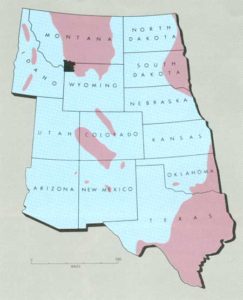 Is your school’s location on this map? Does it look as though the land where your school sits used to be under the sea?
Is your school’s location on this map? Does it look as though the land where your school sits used to be under the sea?
If so, you might have salt somewhere in your neighborhood, too.
The salt mine in Hutchinson, Kansas, is part of the Permian Wellington Formation, formed about 275 million years ago when the Permian Sea dried up. At 27,000 square miles, this is one of the world’s largest salt deposits.
The deposit was discovered in 1887 by a prospector who was looking for oil. He didn’t find oil, but he did find salt. By 1923, the salt mine we visited was producing salt commercially. It still turns out about 500,000 tons of rock salt each year.
It’s called “rock salt” because the salt is in rocks.
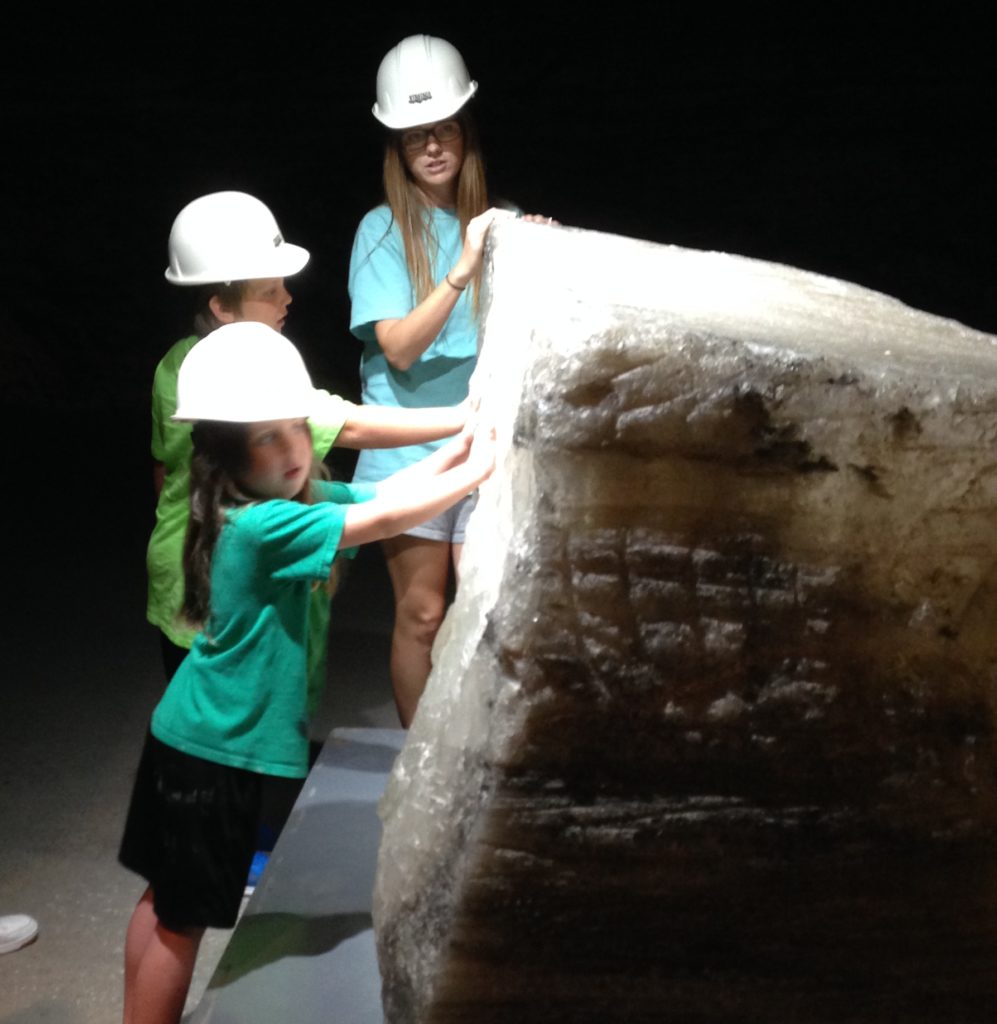
This giant piece of salt is fun to touch. The walls and ceilings in the salt mine are also made of salt. We got to ride in a little train through a part of the salt mine that is no longer in use. There we had a chance to see the places where the miners worked, the miners’ bathroom, and even a part of the mine where layers of salt had fallen from the ceiling to the floor. It was interesting to think about what it might have been like to work in a salt mine.
The Kansas Salt Museum at Strataca has some great resources for educators.
Here are some more online resources for a study of salt in the context of basic chemistry:
- A lesson on dissolving salt in water from PBS provides hands-on experience with ideas about solvents, solutes, and solutions, with study materials for high school students.
- Study Ladder has a whiteboard presentation on the subject of salt production.
- ScienceNetLinks has a lesson that uses salt to work with magnification. If you’ve got magnifying glasses and microscopes on hand, this lesson gives you a simple way to put them to work.
- The University of Colorado offers a Java simulation with lots of resources on salt and sugar solutions.
If you have a chance to visit Strataca, you should. If not, think about our field trip and spend a little time exploring salt in your classroom. Lunch will never be the same!
The post FreshPlans Visits a Salt Mine appeared first on FreshPlans.
By:
Bianca Schulze,
on 7/25/2016
Blog:
The Children's Book Review
(
Login to Add to MyJacketFlap)
JacketFlap tags:
Animals,
Reading Aloud,
Reluctant Readers,
featured,
Board Books,
Books for Boys,
Animal Books,
Dedicated Review,
Ying Hui Tan,
Lindsey Craig,
Ages 0-3,
Add a tag
Try! Try! Try! is an entertaining board book that encourages young readers to try new things.
Enter to win autographed copies of Rocket-Bye and Can a Princess Be a Firefighter?, written by award-winning author Carole P. Roman and illustrated by Mateya Arkova.
Giveaway begins July 23, 2016, at 12:01 A.M. PST and ends August 23, 2016, at 11:59 P.M. PST.
By: Carolyn Hart,
on 7/22/2016
Blog:
(
Login to Add to MyJacketFlap)
JacketFlap tags:
friendship,
picture books,
cats,
mice,
featured,
first day of school,
alliteration,
video clip,
Back to school books,
Wonderful Picture Books,
Fall Children's Books, Learning Games and Printables,
Add a tag
First Day of School Jitters? Try Splat the Cat | Storytime Standouts
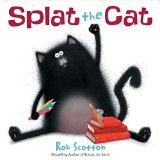 Splat the Cat by Rob Scotton
Splat the Cat by Rob Scotton
Picture book about starting school published by Harper Collins Publishers
There’s no doubt about it, going to school for the very first time can be nerve-wracking. It is no wonder that Splat is wide awake bright and early.
When mom opens his bedroom door, his first instinct is to pull the covers over his head. When that doesn’t work, Splat tries all sorts of tactics to delay leaving for school. He can’t find socks and his hair is a mess. One thing he knows for sure, having a friend in his lunchbox is certain to help. Splat pops Seymour the Mouse into his lunchbox and sets out to meet his new teacher and classmates.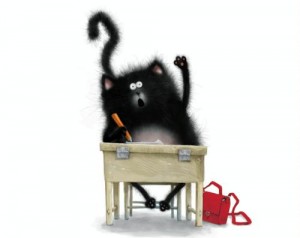
Mrs. Wimpydimple and Splat’s new classmates are very welcoming and soon Splat is full of questions. He is especially curious to know why cats chase mice! (A definite opportunity to introduce the concept of foreshadowing) When it is finally lunchtime, Splat opens his lunchbox and his small rodent friend, Seymour is suddenly the centre of attention – and not in a good way. Splat’s new classmates do exactly what readers will predict – the chase is on!
Engaging, playful illustrations provide many details for young children to notice and enjoy. A mostly grey and black color palette is highlighted with vibrant yellow and red details that pop off the page. Those who are able to read will love the signs in the storefront windows and Mrs. Wimpydimple’s blackboard illustrations.
Harper Collins has some terrific Splat the Cat printables for children to enjoy.
Splat the Cat at Amazon.com
Splat the Cat at Amazon.ca
Storytime Standouts - Raising Children Who Love to Read

By:
Bianca Schulze,
on 7/22/2016
Blog:
The Children's Book Review
(
Login to Add to MyJacketFlap)
JacketFlap tags:
Non-Fiction,
Chapter Books,
Parenting,
Author Interviews,
featured,
Parenting Books,
Social Graces,
Guide Books,
Books About College,
Karen Levin Coburn,
Madge Lawrence Treeger,
Add a tag
The Children’s Book Review: Which five words best describe LETTING GO: A Parent’s Guide to Understanding the College Years?
Karen Levin Coburn: Reassuring, informative, warm, honest, insightful
By: Carolyn Hart,
on 7/18/2016
Blog:
(
Login to Add to MyJacketFlap)
JacketFlap tags:
rhyming,
picture books,
featured,
school life,
diversity in children's books,
social responsibility,
Anti-Bullying Children's Books,
Anti Bullying Books for Children,
metaphorical picture book,
Add a tag
I wanted to love this book – The Smallest Girl in the Smallest Grade | Storytime Standouts
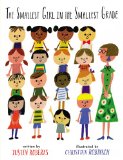 The Smallest Girl in the Smallest Grade written by Justin Roberts and illustrated by Christian Robinson
The Smallest Girl in the Smallest Grade written by Justin Roberts and illustrated by Christian Robinson
Antibullying Picture Book published by G.P. Putnam’s Sons: An Imprint of Penguin Group (USA)
You’ve really got to love a recording artist who has a very popular kids’ CD titled, Meltdown! and another called Not Naptime
and another called Not Naptime . The album titles alone are enough to bring a smile to a weary parent’s face. So, I wanted to think that The Smallest Girl in the Smallest Grade
. The album titles alone are enough to bring a smile to a weary parent’s face. So, I wanted to think that The Smallest Girl in the Smallest Grade was terrific.
was terrific.
And, I do think it is a good book but, there are ways it could have been better.
Sally McCabe is both young and small. She is in the lowest grade at her school and she is the smallest child in the class. Kudos to the illustrator for depicting a racially diverse group of children in the classroom and at the playground. It would have been excellent to see similar diversity in terms of mobility (perhaps one child in a wheelchair or using crutches, for example).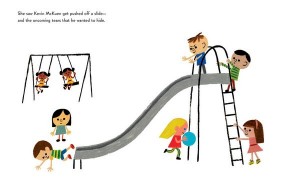
Sally is unusually observant. She notices a kite that is tangled in a tree and she notices that the janitor’s ring has twenty-seven keys. Unfortunately, this is where my evaluation of the book begins to drop: one illustration of the janitor’s ring only shows seven keys and another shows five keys. I completely understand that twenty seven may have been essential to the rhyme BUT the illustrations should be true to the story. If the ring has twenty seven keys – the illustration of the ring should show us each one of them! Young children will pick up on this sort of disparity. They will want to know where the other twenty or twenty two keys are and the omission will detract from the important antibullying message the author is attempting to share.
When a bully pushes Sally’s classmate, the story tells us that he begins to cry but in the illustration, he is dry-eyed. These seemingly minor disparities really do make a difference and discerning young readers will notice them.
Adults may understand the (metaphorical) significance of wildflowers tipping toward light and cats meeting together in a parking lot but I doubt that, without guidance, young children will see any connection between the cats or the flowers and Sally’s story.
Essentially, Sally, observes bullying on the playground, in the hallway at school, in the classroom and in the school cafeteria. Eventually, she speaks up. She announces, “I’m tired of seeing this terrible stuff. Stop hurting each other! This is enough!”
This prompts all of Sally’s classmates and school staff members to point their fingers in the air in solidarity. Soon the school is a much more harmonious place. A somewhat “magical solution” to bullying? Yes, but, this is story that could be used to initiate discussions about bullying and social responsibility.
The Smallest Girl in the Smallest Grade at Amazon.com
The Smallest Girl in the Smallest Grade at Amazon.ca
Storytime Standouts - Raising Children Who Love to Read

Shh! We Have a Plan by Chris Haughton
|
Storytime Standouts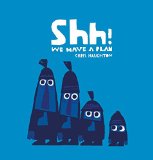
Shh! We Have a Plan by
Chris Haughton Picture book published by
Candlewick PressWhen four friends, armed with three nets, set out to capture a beautiful, red-plumed bird, all goes well until the smallest friend alerts the the ruby bird that something is afoot. Giggles and laughter will accompany a read-aloud session of Shh! We Have a Plan. This is a book that will appeal to children – especially “youngest” children – as well as adults. The repetitive text will have youngsters ‘reading along’ quickly and repeated building of suspense will encourage children to make predictions about whats will happen next and the final outcome.
Bright, bold, dramatic illustrations are a highlight of this captivating, humorous picture book. A key to the storytelling, observant readers will note the eyes and the posture of the smallest friend in the cover art – he is definitely up to something!
Shh! We Have a Plan is the sort of story that parents and teachers will quite happily read again and again. It is great fun!
Chris Haughton won the 2015 Ezra Jack Keats Book Award
for new illustrator with this picture book.
The Ezra Jack Keats Book Award for Illustration was established in 2001 to recognize and encourage emerging talent in the field of children’s book illustration.
Shh! We Have a Plan at Amazon.com

Shh! We Have a Plan at Amazon.ca

Storytime Standouts - Raising Children Who Love to Read
Wordless picture books "tell" a story using illustrations only. They...Classic Picture Book CLICK CLACK MOO Cows that Type When Farmer Brown's cows get their hooves on an old...A Look at the 2014 Theodor Seuss Geisel Medal Award Winner and Honor Books The Watermelon Seed written and illustrated by Greg Pizzoli Picture... 
Life is about who we touch, who we love and who loves us back. This book is a wonderful way to talk to children about the grand scheme of everything.
Enter to win your choice of one of fifteen designs from a series of colorful journals known as The Friendsbook!
Giveaway begins May 23, 2016, at 12:01 A.M. PST and ends June 22, 2016, at 11:59 P.M. PST.
By:
Bianca Schulze,
on 5/22/2016
Blog:
The Children's Book Review
(
Login to Add to MyJacketFlap)
JacketFlap tags:
Ages 4-8,
Ages 9-12,
Book Lists,
Nature,
Science,
Butterflies,
Bugs,
featured,
DK Publishing,
Animal Books,
National Geographic Children's Books,
Nature Studies,
Sterling Children's Books,
Environment & Ecology,
Detective Books,
Bugs & Spiders,
Princeton Architectural Press,
Nancy Honovich,
Backyard Books,
Books About Flies,
Charlotte Caldwell,
Christine Berrie,
Darlyne Murawski,
Kathrina Iris,
Maggie Li,
Rachel Elizabeth Cole,
Tangled Oak Press,
University of South Carolina Press,
Add a tag
We've curated a list of some truly wonderful and entertaining bug books for kids ages 4 to 99. We've also included the game Bug Bingo, and it's the bees-knees.
Isaac and his Amazing Asperger Superpowers! by Melanie Walsh
|
Storytime Standouts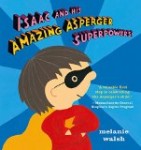
Isaac and his Amazing Asperger Superpowers! written and illustrated by Melanie Walsh
Picture book about a child with Asperger’s Syndrome published by
Candlewick PressWritten from the perspective of a boy with Asperger’s Syndrome
,
Isaac and His Amazing Asperger Superpowers!
is a cheerful, positive and reassuring picture book that explains how Isaac’s thoughts and behavior sometimes differ from those of his friends. Well-suited to preschool-age children or early primary classroom use, bright, bold illustrations are visually appealing and will be easily seen and interpreted in a group or classroom setting.
Friends, family members and classmates will discover that children with Asperger’s Syndrome may have different interests, energy levels and ways of interacting than others do. For example, they may like to bounce rather than play team sports or they may fidget with a toy in order to relax and listen in class. They may have difficulty understanding jokes or some in social situations. Insights are shared matter-of-factly, with respect for both the Asperger’s child and a child who does not have Asperger’s.
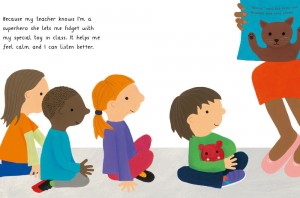
Using meaningful examples and fun illustrations, Walsh helps young readers to understand that children with Asperger’s Syndrome have strengths including a great memory for facts, curiosity and a heightened awareness of sounds. She also shows the special relationship an Asperger’s child can have with pets and family members.
A great addition to a personal or professional library, end papers include a list of Autism and Asperger’s Syndrome links.
Isaac and His Amazing Asperger Superpowers! at Amazon.com

Isaac and His Amazing Asperger Superpowers! at Amazon.ca

Read our reviews of other picture books about Autism and Asperger’s Syndrome
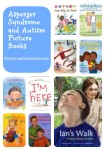
Storytime Standouts - Raising Children Who Love to Read
Sam, his sister Emma and their parents live in a...My Brother is Autistic, A Picture book about Autism Written from the perspective of an older sibling, My Brother...I’m Here by Peter H. Reynolds I’m Here written by Peter H. Reynolds You will also... 
By: Carolyn Hart,
on 4/30/2016
Blog:
(
Login to Add to MyJacketFlap)
JacketFlap tags:
Learning the Alphabet,
Wonderful Picture Books,
alphabet,
imagination,
picture books,
family life,
featured,
Canadian illustrator,
digital illustrations,
phonemic awareness,
early learning,
Add a tag
Awake Beautiful Child by Amy Krouse Rosenthal and Gracia Lam
|
Storytime Standouts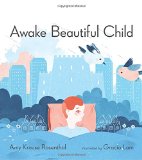
Awake Beautiful Child written by
Amy Krouse Rosenthal and
Gracia Lam Alphabet picture book published by
McSweeny’sIn this fascinating picture book, Amy Krouse Rosenthal uses only words that begin with A, B or C to tell her story. The day begins as a young boy awakens and enjoys Apples, Bananas and Cantaloupe for breakfast before heading outside and finding Ants, Butterflies and Caterpillars. He later celebrates at a birthday party, explores a city and appreciates an artist. Older children will enjoy scouring debut picture book illustrator Gracia Lam’s detailed digital illustrations for an apron, bowling pins, binoculars, a castle, a cape, a church (and more!) that serve to broaden the appeal of the story and support the development of phonemic awareness
and
alphabet recognition.
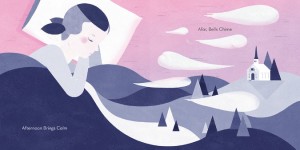
It is worth mentioning that Ms. Rosenthal and Ms. Lam do not limit the story or illustrations to the phoneme /K/, they also challenge readers to recognize the use of ‘C’ in words beginning with the /ch/ and soft ‘C’ sounds, as in church and city. the ‘A’ words that we detected use the short vowel sound.
We envision this picture book as a wonderful inspiration to young illustrators and writers. Great for classroom use, the clever take on the alphabet book genre could certainly be a jumping off point for children to create their own stories and illustrations using only two or three letters.
This is a picture book that will be enjoyed by children aged 3 and up but that has great potential for exciting older children and adults.
Awake Beautiful Child at Amazon.com

Awake Beautiful Child at Amazon.ca

Storytime Standouts - Raising Children Who Love to Read
A Pod of Orcas: A Seaside Counting Book written by...Supporting a Child With Delayed Speech or Language Development Since September 2013, I have been working twice a week...Four Ways to Help Your Child Learn the Alphabet Kinesthetically As adults, we tend to think of reading, learning to... 
Enter to win autographed copies of Rocket-Bye and Can a Princess Be a Firefighter?, written by award-winning author Carole P. Roman and illustrated by Mateya Arkova. Plus, a bonus prize of author Eric Jay Cash's debut picture book Cave Kiddos: A Sunny Day!
Giveaway begins April 21, 2016, at 12:01 A.M. PST and ends May 22, 2016, at 11:59 P.M. PST.
By:
Bianca Schulze,
on 4/21/2016
Blog:
The Children's Book Review
(
Login to Add to MyJacketFlap)
JacketFlap tags:
Ages 4-8,
Picture Books,
featured,
Author Showcase,
Books for Girls,
Self-acceptance,
Social Graces,
Poetry & Rhyme,
Dedicated Review,
Books About Noses,
Andrew Fairchild,
George A. Raggett,
Add a tag
Can there ever be enough books that encourage kids to accept themselves for who they are? We think not! Rose and Her Amazing Nose is a picture book that does just this: it teaches kids the importance of accepting themselves.
By:
Bianca Schulze,
on 4/20/2016
Blog:
The Children's Book Review
(
Login to Add to MyJacketFlap)
JacketFlap tags:
Ages 0-3,
Ages 4-8,
Picture Books,
featured,
Princesses,
Author Showcase,
Self-empowerment,
Books for Girls,
Rhyming Text,
Social Graces,
Carole P. Roman,
Dedicated Review,
Mateya Arkova,
Books About Jobs,
Books About Vocations,
Add a tag
Can a Princess Be a Firefighter? is an empowering picture book by award-winning author Carole P. Roman that encourages children to follow their dreams.
By:
Guest Posts,
on 4/20/2016
Blog:
The Children's Book Review
(
Login to Add to MyJacketFlap)
JacketFlap tags:
HarperCollins,
Magic,
Ages 9-12,
Chapter Books,
Author Interviews,
featured,
The Keepers,
Fantasy: Supernatural Fiction,
Ted Sanders,
Selfie and a Shelfie,
Add a tag
Check out Ted Sanders’ Selfie with The Keepers: The Harp and the Ravenvine, the second in the magical series that began with The Box and the Dragonfly.
By:
Guest Posts,
on 4/20/2016
Blog:
The Children's Book Review
(
Login to Add to MyJacketFlap)
JacketFlap tags:
Ages 4-8,
Picture Books,
Author Interviews,
featured,
Books for Girls,
Fathers,
Father's Day,
Flashlight Press,
Parenting Books,
Daddy Books,
Selfie and a Shelfie,
Jessica Warrick,
Josh Bledsoe,
Add a tag
Check out Josh Bledsoe’s Selfie with Hammer and Nails, the story of a little girl and her dad.
By:
Guest Posts,
on 4/18/2016
Blog:
The Children's Book Review
(
Login to Add to MyJacketFlap)
JacketFlap tags:
Ages 4-8,
Ages 9-12,
Historical Fiction,
Chapter Books,
Author Interviews,
Social Justice,
featured,
Books for Boys,
Immigrants,
Justice,
Animal Rights,
Deborah Hopkinson,
Homelessness & Poverty,
19th Century Books,
Books Set in New York,
Books with Pickpockets,
Street Musicians,
Add a tag
Deborah Hopkinson is the award-winning author of more than 45 books for young readers.
By:
Guest Posts,
on 4/16/2016
Blog:
The Children's Book Review
(
Login to Add to MyJacketFlap)
JacketFlap tags:
HarperCollins,
Ages 9-12,
Young Adult,
Young Adult Fiction,
Book Lists,
Chapter Books,
featured,
Rachel Caine,
Cindy Pon,
Henry Holt and Co.,
Disney-Hyperion,
Teens: Young Adults,
Lyndsay Faye,
Leigh Bardugo,
Best Kids Stories,
Best YA,
Soman Chainani,
Alexander Bracken,
Lilah Bowen,
Month9Books LLC,
Paul Trembly,
Add a tag
We're living in a golden age of great fiction ... so many beautiful works being published every month, and it's become a real paradise for readers, whatever they like to read.
By:
Bianca Schulze,
on 4/15/2016
Blog:
The Children's Book Review
(
Login to Add to MyJacketFlap)
JacketFlap tags:
Ages 0-3,
Ages 4-8,
Dr. Seuss,
Book Lists,
Cars,
featured,
Transportation,
Peggy Rathmann,
Random House Books for Young Readers,
Roy McKie,
Greenwillow Books,
Sandra Boynton,
Annette Tison,
Talus Taylor,
G.P. Putnam's Sons Books for Young Readers,
Donald Crews,
Sue Fliess,
Family Favorites,
Best Kids Stories,
Sourcebooks Jabberwocky,
Workman Publishing Company,
A & P Books,
Sarah Beise,
Theo. LeSieg,
Add a tag
Author Sue Fliess selects "Five Family Favorites" to share with readers ...
Read the rest of this post
Enter to win a copy of Wonder Woman at Super Hero High: DC Super Hero Girls, by Lisa Yee.
Giveaway begins April 9, 2016, at 12:01 A.M. PST and ends May 8, 2016, at 11:59 P.M. PST.
After taking a look at what has been trending on The Children's Book Review over the past month, it seems that you have all be equally excited about our 8th birthday celebratory giveaway.
By:
Bianca Schulze,
on 4/7/2016
Blog:
The Children's Book Review
(
Login to Add to MyJacketFlap)
JacketFlap tags:
featured,
Boyds Mills Press,
Geology,
Animal Books,
Nature Studies,
Environment & Ecology,
Speed Interview,
Daniel Levitin,
Donald Kroodsma,
Jeff Sayre,
Kenn Kaufman,
Kim Kaufman,
Liz Cunningham,
Ages 4-8,
Ages 9-12,
Science,
Chapter Books,
Author Interviews,
April Pulley Sayre,
Add a tag
Which five words best describe The Slowest Book Ever?
April Pulley Sayre: Chewy science for wondrous pondering.
By:
Bianca Schulze,
on 4/6/2016
Blog:
The Children's Book Review
(
Login to Add to MyJacketFlap)
JacketFlap tags:
Magic,
Ages 9-12,
Fantasy,
Art,
Chapter Books,
featured,
Author Showcase,
Books for Girls,
Magical Creatures,
Fantasy: Supernatural Fiction,
Loss of a Grandparent,
Books with Portal Travel,
Marc Remus,
Add a tag
The Gallery of Wonders, by Marc Remus, is an incredibly engaging middle grade book for ages nine and up—especially those that dabble in art, magic, and defending against the dark arts.
View Next 25 Posts










